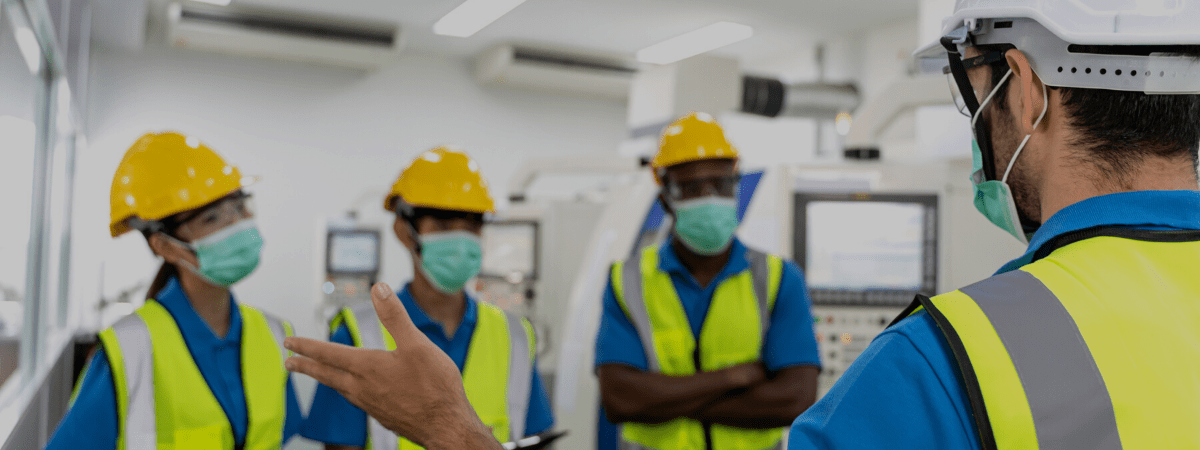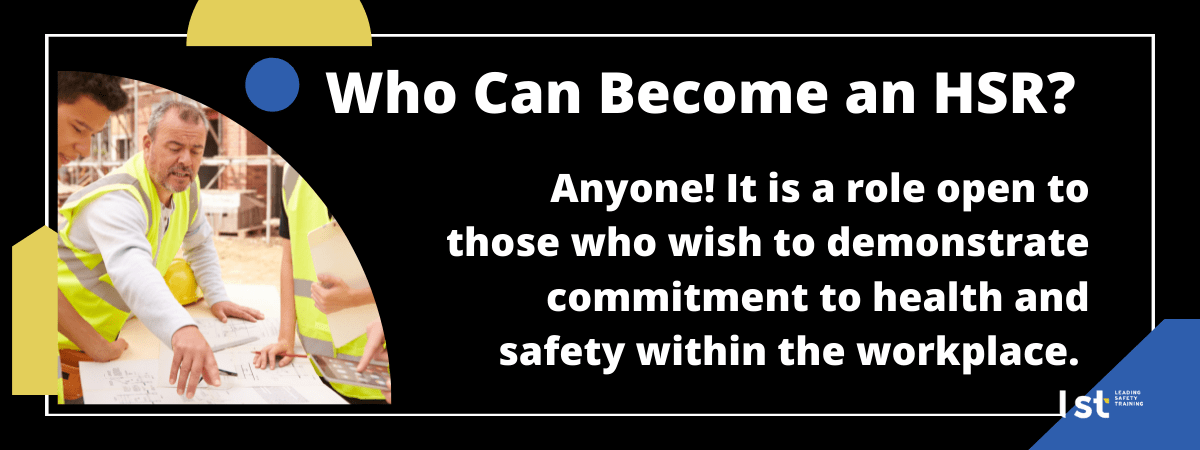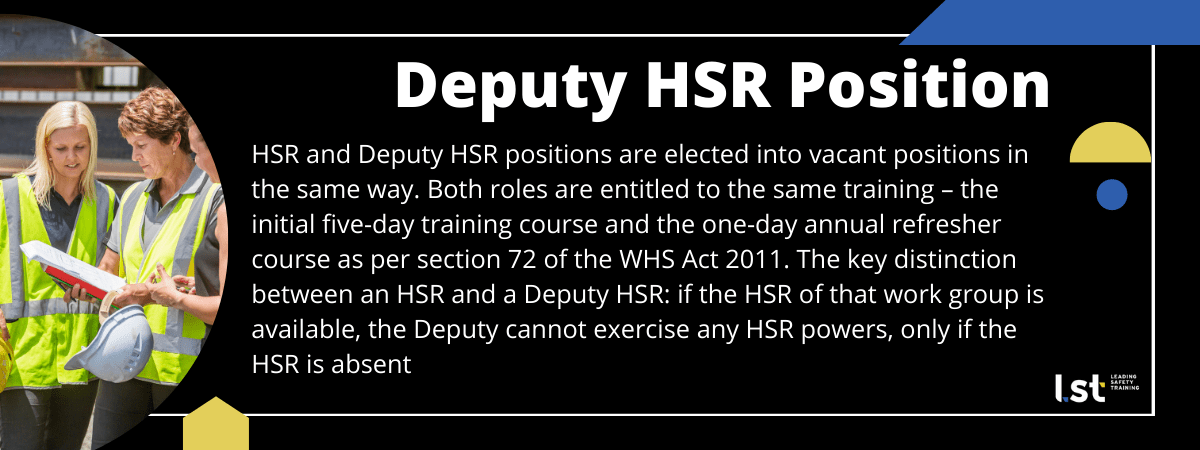A health and safety representative (HSR) is elected to represent the workers on matters related to health and safety in the workplace. Anyone within a workplace can become an HSR. The representative will gather vital information that can help eliminate any issues relating to safety on the worksite, and relay this directly to the PCBU and other HSRs if applicable.
HSRs are crucial to the safe operation of any workplace, and their role in managing the well-being of workers is straightforward. So, how do you become a health and safety representative? Leading Safety Training is going to outline the process of becoming an HSR, how you can get elected, and the powers and responsibilities of a health and safety representative.
How Do You Become a Health and Safety Representative?
You become a health and safety representative by being elected by your peers. HSRs are elected by groups of workers to actively represent them and act on their behalf in relation to workplace health and safety.
How to Elect a Health and Safety Representative
Electing a health and safety representative is a straightforward procedure with six key steps. And whilst electing an HSR is not a complicated process, as a legally defined position, it is imperative that elections are held in the correct way. The steps for how to elect a health and safety representative are listed below:
Step One:
The first step in understanding “how do you become a health and safety representative?” Is by requesting the person conducting a business or undertaking (PCBU) to facilitate elections for the position of an HSR.
Step Two:
HSRs represent a work group, and therefore before electing an HSR, workers must define separate work groups. These groups must be formed within 14 days of receiving a request to nominate an HSR.
Negotiating with the PCBU will decide:
• Number and configuration of work groups that will be represented by the elected HSR.
• How many HSRs will be elected, and if any deputies will also be elected.
• Which workplace these work groups are be defined, for example, if PCBU has workers across multiple sites.
• The number of workers in each group.
• Group workers based on their type of work.
Should these negotiations fail, which includes if talks do not commence within 14 days, then anyone that would have been involved in the negotiations can request an NSW SafeWork representative be summoned to assist in determining work groups.
Step Three:
Following the negotiations, workers are given a set period of time to make nominations for representatives throughout the workgroup. Multiple HSRs are eligible for nomination for the positions of either HSR or deputy HSR. The nomination period ends at the set date for the election.
Step Four:
After the nomination period has ended, an election can take place. Workers need to ensure that:
• Each worker in the group is informed of the date of the election.
• All workers can nominate for the position and vote in the election.
• Each work group elects an individual HSR.
For the election, workers in a work group can independently decide how the election for the HSR is to be run. It can be informal with a show of hands, or more formally like using a ballot box.
Step Five:
Notify SafeWork NSW about the outcome of the election and register the details of the HSR and deputy HSR if applicable. An HSR for a work group holds their position for three years.
Step Six:
Following the election, the relevant body must grant the newly elected HSR time off work to attend the initial 5 Day HSR Training Course. The course is not mandatory but highly recommended, and if the HSR wishes to complete the course, it must be done within three months of the initial request. All fees associated with the course must be paid for by the PCBU or operating body. The HSR is entitled to all remuneration they would have otherwise earned if they had performed regular duties during that period.
Suppose no agreement can be made on this course or any other problems associated with reimbursement. In that case, either party may request an inspector from SafeWork NSW to come and resolve the matter.
A Health and Safety Representative Is Elected to Represent Who?
Taking on the responsibilities of an HSR is a valuable service to any workplace. HSRs play a pivotal role in negotiating the safety rights of workers. As mentioned previously, HSRs are elected by their work groups to represent them. Work groups may be divided up into different sections within a business. These classifications can be made based on:
• Location worked
• Type of work conducted
Work groups typically consist of workers who conduct similar types of work and are at risk of similar health and safety concerns within the workplace.
Powers and Functions of a Health and Safety Representative
Now that we have answered the question of, “How do you become a health and safety representative?” Let’s look at what are the powers of these newly elected HSRs. Simply put, the powers and responsibilities are all centred around the effective representation of workers within the work group around health and safety issues. Other powers and functions as outlined by SafeWork Australia include:
• Investigating all complaints from work group members.
• Representing members of the work groups in meetings about work health and safety concerns.
• Monitoring SafeWork compliance by the PCBU.
• Continual inspections of workplaces, especially following an incident that put a worker’s safety at risk.
• Liaising with PCBUs to conduct thorough inspections, occasionally with a SafeWork inspector.
Become a Health and Safety Representative with Leading Safety Training
A health and safety representative is an invaluable asset to any workspace. By representing their workgroup, HSRs ensure a safe and productive work environment and the encouragement of productive work. To become an HSR, you will need to be elected by your work group. Knowing how to elect a health and safety representative is essential when conducting elections within SafeWork guidelines. Training completed by HSRs is as important as the role itself.
If you’re interested in becoming a health and safety representative, get started with Leading Safety Training’s course for elected HSRs. SafeWork approved, the training involves a rigorous five-day course where the representative will cover the necessary requirements and expectations of the role. Every HSR is entitled to attend one five-day course and a one-day refresher each year of their three-year term – we also offer HSR refresher courses. Book your course online or phone us at (02) 4382 3055 for more information today.



